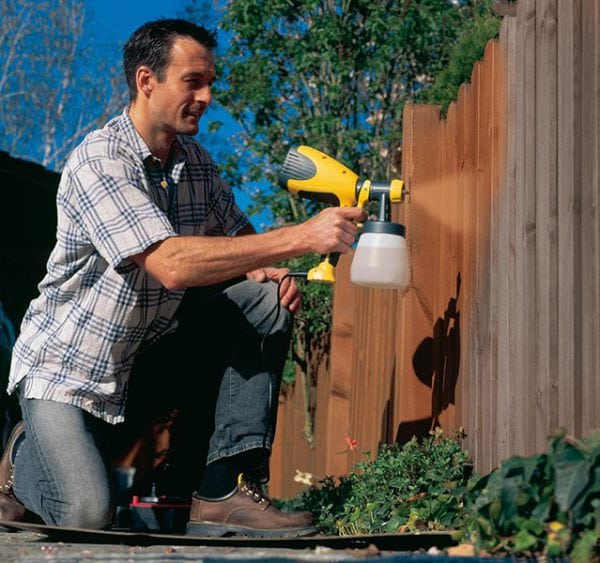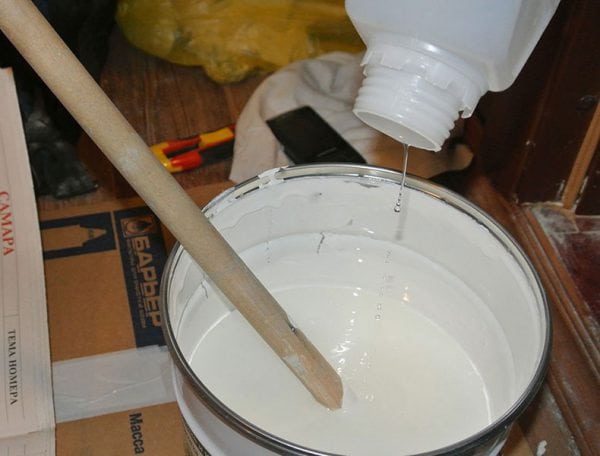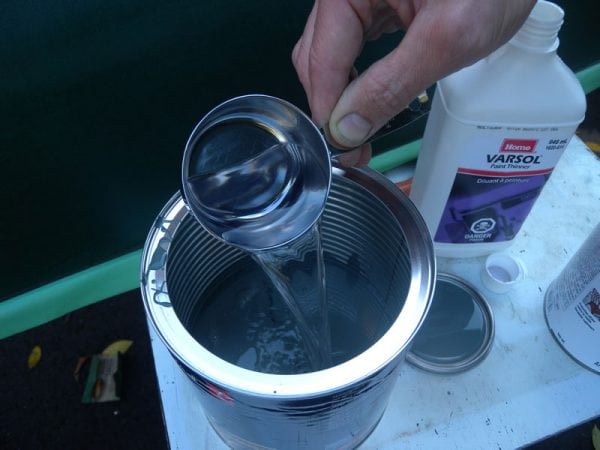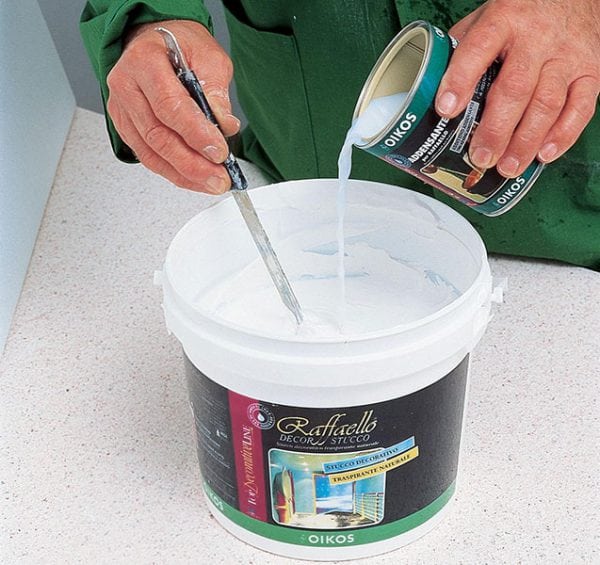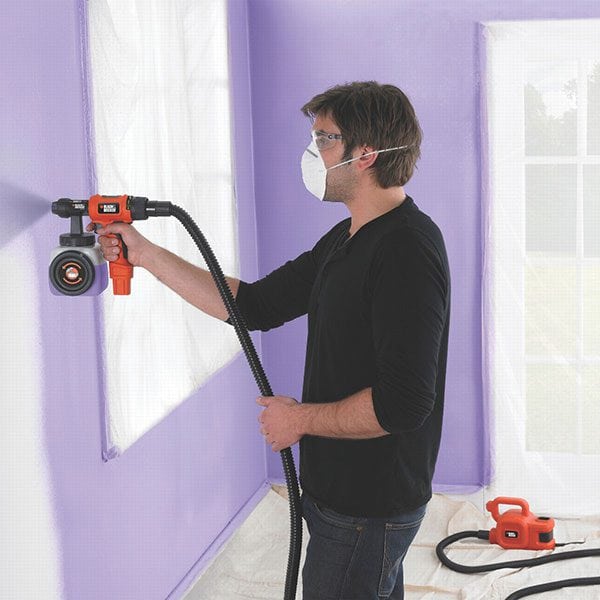The properties of the paintwork depend on the quality of the materials used and the method of their application. To get a solid, smooth, uniform thickness coating, special equipment is used - a spray gun. Knowing how to properly dilute the paint for a spray gun is one of the most important when working with this equipment.
- Paint viscosity
- Fluid viscosity measurement
- Materials used for painting
- Solvents Used
- Additional properties
- Brief Characterization of Solvents
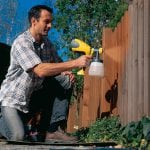
After painting, you can get a better surface after painting, without defects and sagging, with a uniformly applied thin layer of dye. With it, you can not only reduce the time it takes to complete the work, but also save money by reducing the required amount of materials. But at the same time, two features should be considered:
- Not all materials can be used, selection spray paint - a responsible task.
- Paints and varnishes must have a certain viscosity, which will not interfere with the operation of the equipment.
The quality of the coating directly depends on how thick the dye was used, in other words, on its viscosity.
to contents ↑Paint viscosity
Using expensive high-quality dyes, you can still get an unsatisfactory result for the following reasons:
- It is difficult to apply thick paint evenly over the surface, it will dry for a long time, and an overestimated thickness will affect the cost.
- The paint applied to a vertical or inclined surface will drain uneven streaks, which are difficult to eliminate.
- Thick paint will not penetrate the pores and cracks of the surface, which will affect the quality of the resulting coating.
- Existing models of spray guns are not always designed for high viscosity materials. They can become clogged, which will require disassembling the equipment and cleaning the internal surfaces.
- To obtain a high-quality coating after applying liquid varnishes and paints, it is necessary to apply the liquid in several layers, which affects the strength of the coating and the time it takes to complete the work.
Fluid viscosity measurement
To correctly determine the viscosity, a special device is used - a viscometer. A unit for measuring viscosity in DIN seconds has been adopted.
The viscosity required to obtain a high-quality coating is indicated on the packaging of coatings. But this parameter is influenced by some more parameters, such as air temperature, humidity. In the absence of detailed information on the label, the following data will be useful:
- The viscosity of automotive enamels should be 15-20 seconds.
- Oil paint and enamels must have a viscosity of 15-25 seconds.
- Wide range for primer - 15-30 sec.
- The varnish is adjusted to a viscosity of 18-20 seconds.
- High viscosity for latex paints is allowed - 35-45 sec.
Visually diluted paint should consist of resembling fat milk.The correct viscosity index can be achieved using a solvent, which is selected depending on the composition of the coloring substance.
to contents ↑Materials used for painting
To choose the right solvent, you need to know the composition and properties of the paint used. For coating surfaces with a spray gun, the following paints and varnishes have proven themselves well:
- alkyd;
- acrylic;
- oil;
- water emulsion;
- nitro enamels.
Solvents Used
It is permissible to obtain a paint of the required correct consistency by adding a solvent. The easiest way is to apply the one recommended in the attached instructions. To protect yourself from problems associated with the incompatibility of paint and solvent, it is better to use products from the same manufacturer.
To obtain a quality composition suitable for application by a spray gun, it is necessary to follow the instructions exactly and not to conduct experiments.
It is possible to independently choose a suitable solvent, taking into account the characteristics of paints and varnishes.
To make sure the right choice, you must try each of the options. General recommendations:
- Water based paints are diluted with distilled water, alcohol or ether. Ordinary water is not suitable due to the presence of impurities that, when dried, can leave a white coating.
- Oil is diluted with drying oil, oil-resin varnish, white spirit.
- All kinds of solvents can be used to dilute enamels, such as No. 645, No. 646, solvent, White Spirit, R-4, R-6, gasoline, xylene.
- Two-component dyes are first mixed strictly according to the scheme specified in the instructions. The viscosity obtained is checked with a viscometer and, if necessary, diluted with liquid.
Additional properties
Depending on the composition and properties of the solvents are divided into:
- Non-polar, including hydrocarbons in the liquid state, are kerosene, white spirit.
- Polar, the chemical form of which has a group (OH). Alcohols related to them are used to dissolve water-based paints and acrylic enamels.
When choosing a solvent, it is taken into account that the polar group is suitable only for those paints and varnishes that are considered polar, and vice versa. Xylene and benzene are universal solvents that can be combined with any coloring matter.
to contents ↑Brief Characterization of Solvents
The solvents available in the distribution network have a complex composition and are used to dilute a certain type of coatings:
- No. 646 is not the best option. In relation to paints, it is aggressive: not only dilutes them, but also makes changes in the composition. Most often used for primers and acrylic based materials.
- No. 647 is relatively aggressive in properties, dissolves nitro enamels and nitro-varnishes. Special care is required when using.
- Solvent No. 650 due to the gentle interaction is widely used for dissolution.
- Alkyd paints diluted with R-4which includes polymers.
These recommendations will help to properly dilute the paint for the spray gun. This will contribute to obtaining a high-quality uniform coating without sagging and defects.

